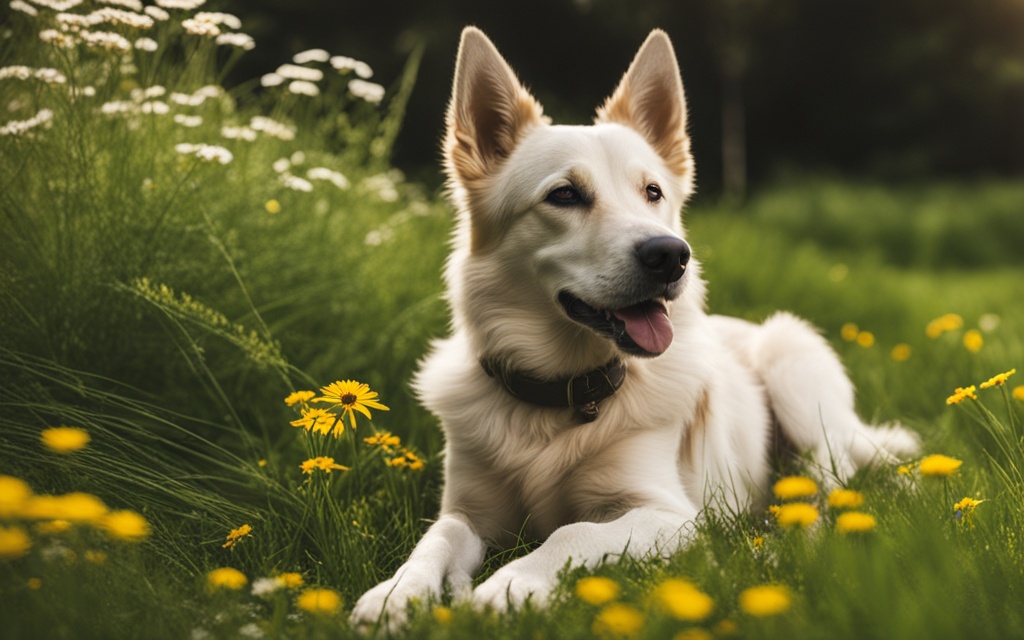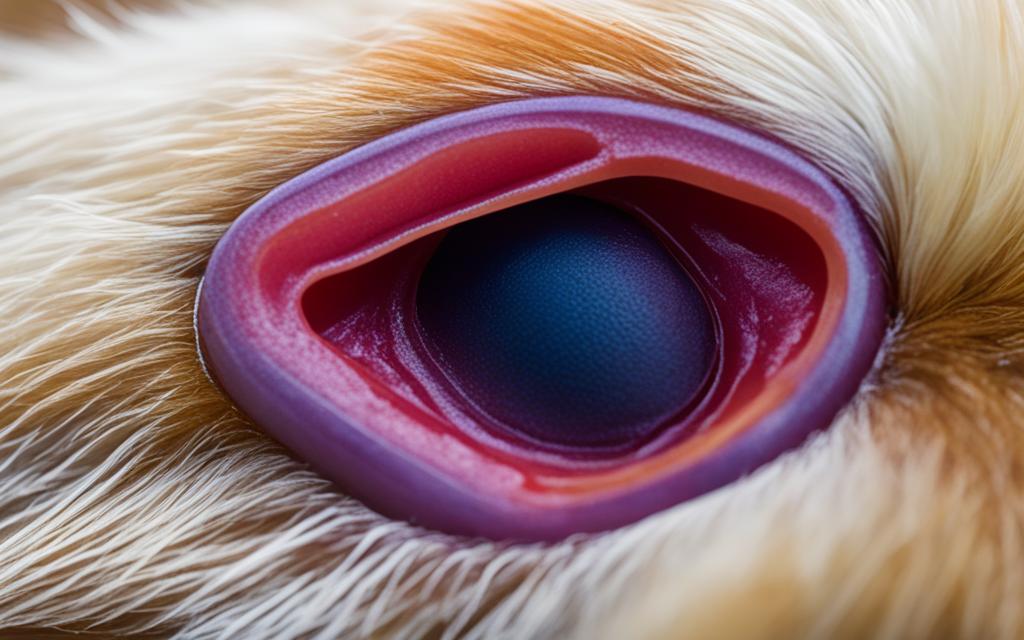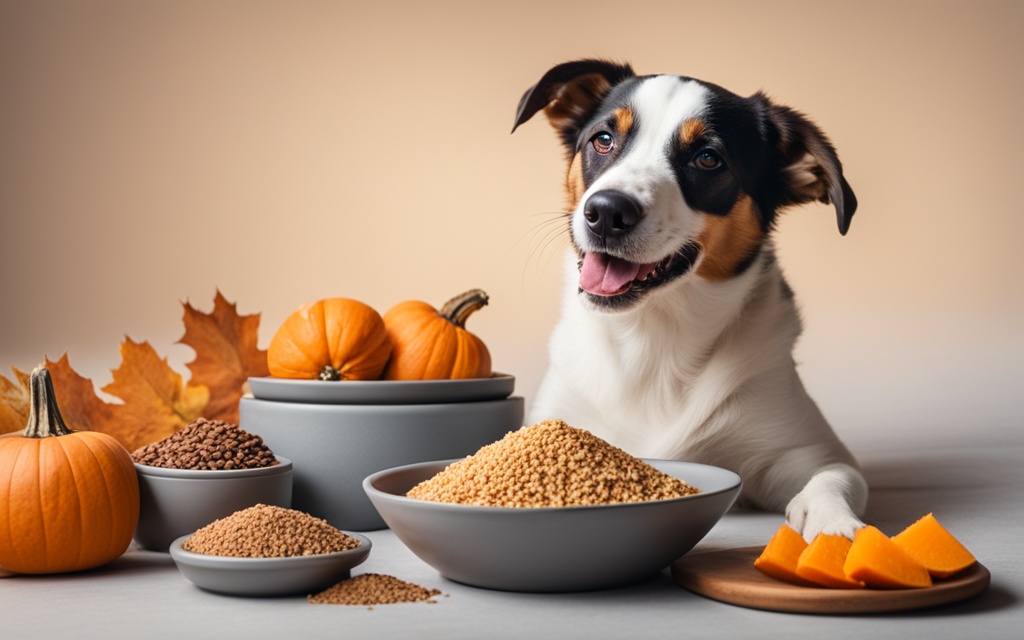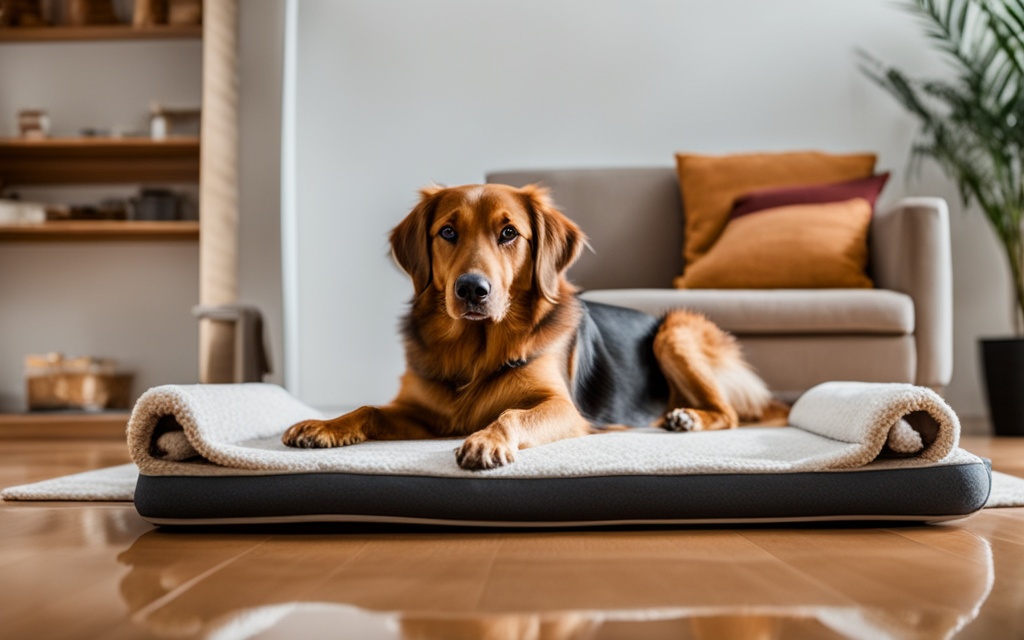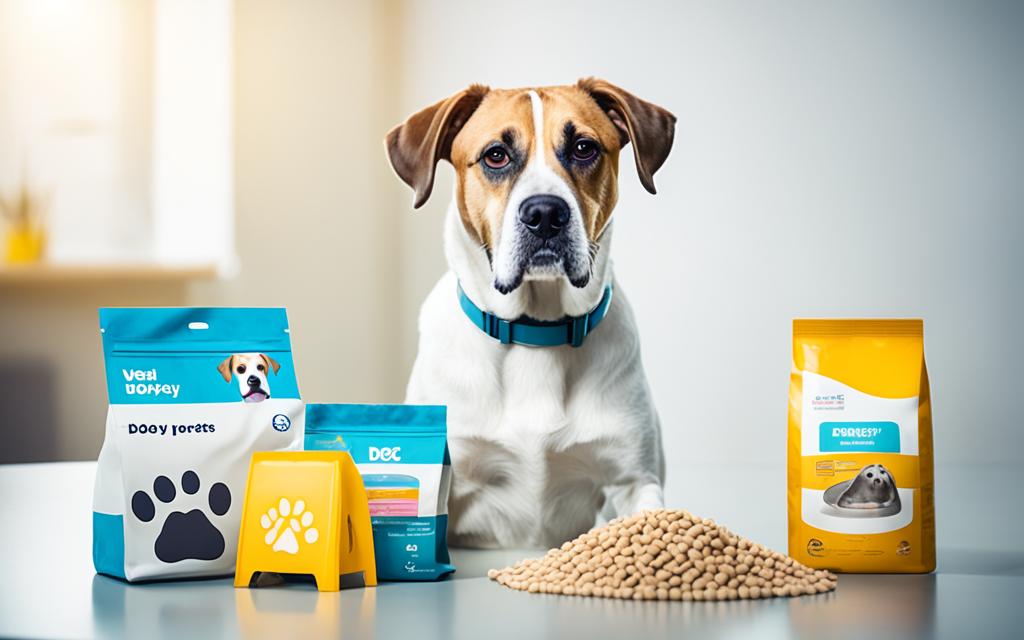Dog hot spots can make our pets very uncomfortable. It’s important to find natural ways to treat them. These remedies help ease pain and keep your dog’s skin healthy. Many pet owners prefer natural options to help their dogs feel better.
We will look into what causes hot spots and how to treat them naturally. This will help you take better care of your pet. Let’s dive into the world of natural treatments for your dog’s comfort.
Understanding Dog Hot Spots
Dog hot spots, or acute moist dermatitis, are sudden skin infections that can hit any dog. They appear as red, itchy areas that may cause discomfort and even hair loss. These infections need quick action from pet owners.
Many things can lead to these irritating conditions. Allergies to food or environmental factors, poor grooming, or insect bites can cause skin inflammation. This inflammation can quickly turn into hot spots. Dogs may scratch or bite at these spots, making things worse and increasing infection risks.
Canine dermatology sheds light on how to manage and prevent hot spots. By understanding these skin issues, pet owners can spot changes in their dog’s skin early. This knowledge helps keep your furry friend healthy and happy.
Signs and Symptoms of Hot Spots in Dogs
It’s crucial to spot hot spots in dogs early to act fast. Dogs with skin issues often lick and chew a lot at those spots. If you notice redness and swelling, it’s a sign of a hot spot. These spots can also have pus and make your dog itch and feel uncomfortable.
Hot spots usually show up where dogs can easily reach, like their legs, paws, and face. Owners should watch closely to catch these signs early. Catching them early helps stop the problem from getting worse.
Here’s a checklist to help you recognize hot spots in dogs:
- Excessive licking or chewing at a particular spot
- Redness and inflammation of the skin
- Pus-filled or moist lesions
- Changes in behavior, such as increased agitation
- Hair loss in the affected area
| Sign/Symptom | Description |
|---|---|
| Excessive Licking | Dog frequently licks a specific area, indicating irritation. |
| Redness | Inflammation appears on the skin, signaling a problem. |
| Pus-filled Lesions | Presence of sores that may ooze pus, highlighting infection. |
| Behavioral Changes | Increased restlessness or agitation due to discomfort. |
| Hair Loss | Noticeable hair loss around the affected spots. |
Common Causes of Dog Hot Spots
Hot spots are uncomfortable for dogs and often arise due to various causes. Environmental factors play a big role, with allergens like pollen, dust, and chemicals being main culprits. These elements can trigger allergic reactions that lead to itching, causing dogs to scratch or bite their skin.
Food allergies are another common reason for hot spots. Many dogs react badly to certain ingredients in their food, leading to skin irritations. Flea bites can also cause a lot of itching, which may lead to hot spots if not treated quickly.
Underlying skin conditions, including dermatitis and fungal infections, can also cause hot spots. Poor grooming habits create an environment ripe for skin irritants in dogs, leading to matting and moisture retention that worsens the issue.
To prevent hot spots, pet owners should keep up with regular grooming and watch for any signs of allergies. Taking action quickly can help remove irritating triggers and keep the skin healthy.
| Cause | Description |
|---|---|
| Environmental Allergens | Pollen, dust, and chemicals that irritate the skin. |
| Food Allergies | Specific ingredients in food that trigger allergic reactions. |
| Flea Bites | Flea infestations that cause significant itching and scratching. |
| Skin Conditions | Conditions like dermatitis or infections leading to hot spots. |
| Poor Grooming | Neglecting grooming can lead to matted fur and moisture retention. |
Natural Treatments for Dog Hot Spots
Finding natural ways to treat dog skin issues is key for pet owners. Dog hot spots can be painful and annoying. But, herbal remedies and essential oils for pets can help soothe and heal them.
Herbal Remedies for Skin Soothing
Herbal remedies are a gentle way to treat hot spots. Calendula and chamomile have anti-inflammatory properties that calm irritated skin. You can use these herbs in different ways:
- Infused oils for topical application.
- Compressions using cooled herbal teas.
- Ointments made from herbal extracts.
Always make sure to dilute herbal remedies properly to prevent skin irritation. Talk to a vet for advice on the best methods and amounts for your dog.
Essential Oils That Can Help
Essential oils can be very helpful for hot spots. Oils like lavender and tea tree oil have antimicrobial and soothing effects. But, it’s important to dilute them correctly before putting them on your dog’s skin. Here’s what to do:
- Choose high-quality, pet-safe essential oils.
- Mix the essential oil with a carrier oil, like coconut or olive oil.
- Test a small skin area for any bad reactions.
- Put a little on the affected area.
Homeopathic Options for Treating Hot Spots
Homeopathy offers a unique way to treat dog hot spots, focusing on each dog’s specific needs. Remedies like Apis mellifica can help reduce swelling and ease pain in hot spots. This remedy is great for dogs with inflamed or painful hot spots.
Sulphur is another option for dogs with skin irritations. It helps remove toxins and supports healing. This makes it a good choice for dogs with ongoing skin problems.
Working with a skilled homeopath ensures you get advice tailored to your dog’s health. The right remedy can make a big difference in your dog’s comfort and healing. By using homeopathic remedies, you can help your dog’s skin health naturally.
| Homeopathic Remedy | Indications | Benefits |
|---|---|---|
| Apis mellifica | Swelling and irritation | Reduces inflammation |
| Sulphur | Broader skin irritations | Detoxifies and promotes healing |
| Hepar sulphuris | Infections and pus formation | Supports pus drainage and pain relief |
| Graphites | Dry, itchy skin | Moisturizes and soothes |
Keeping Your Dog Comfortable During Healing
It’s key to make your dog feel comfy while they heal from hot spots. A calm place helps reduce stress, which is good for healing. Make a cozy spot where your dog feels safe and calm. Soft bedding can make them more comfortable, helping them rest well as they get better.
Taking care of sick pets means paying close attention to them. Use a cone collar or protective gear to keep them from licking or chewing the sore spots. This is important to stop further irritation during recovery. Keeping the skin clean and dry is also crucial for healing, as moisture can make things worse.
Check the healing spots often to keep them clean and dry. Use gentle cleaning methods your vet recommends to keep their skin healthy. A stress-free environment and careful care are key for your dog’s recovery.
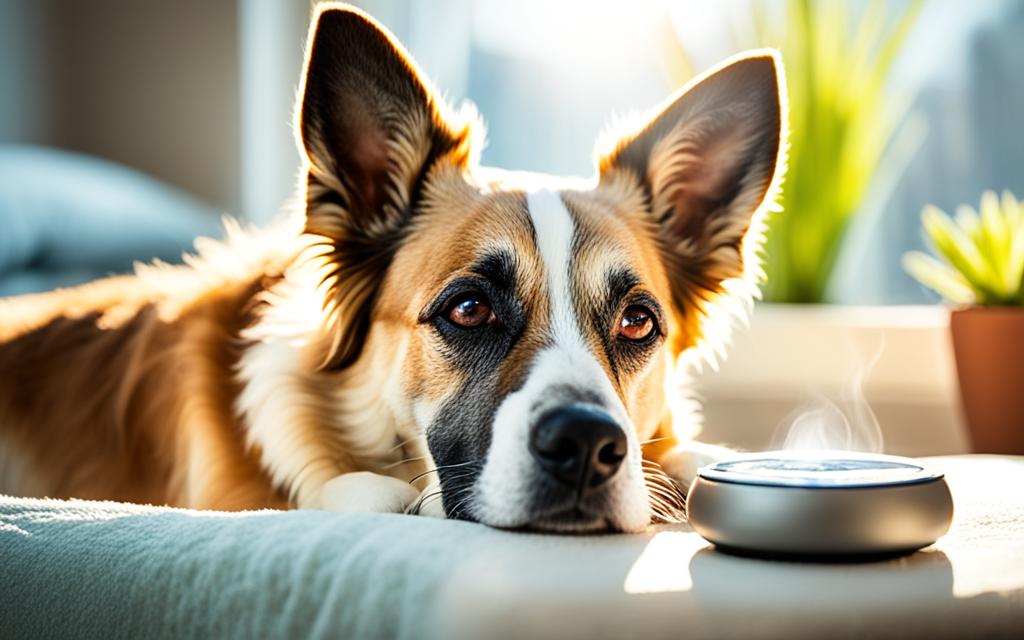
Preventive Measures for Dog Hot Spots
Keeping your dog clean and well-fed is key to preventing hot spots. Regular grooming and a balanced diet can help avoid these skin issues. These steps can make your dog more comfortable and healthier.
Regular Grooming Techniques
Grooming your dog is crucial for their skin and coat health. A regular grooming routine keeps their coat clean and free of tangles. This helps avoid moisture and irritants. Here are some tips:
- Brush your dog regularly to remove loose fur and debris.
- Check for any signs of irritation or skin problems during grooming sessions.
- Use appropriate grooming tools for your dog’s coat type.
- Consider scheduling professional grooming for breeds that require special attention.
Proper Diet for Skin Health
A balanced diet is essential for your dog’s overall health, especially for their skin. A diet rich in omega fatty acids and essential nutrients helps keep their coat shiny and reduces irritation. Key dietary components include:
| Nutrient | Benefit |
|---|---|
| Omega-3 Fatty Acids | Reduces inflammation and supports skin health. |
| Omega-6 Fatty Acids | Helps maintain the skin barrier and hydration. |
| Vitamins A and E | Promote healthy skin and coat. |
| Zinc | Supports skin and immune function. |
Adding supplements to your dog’s diet can improve their skin health and fight hot spots. By focusing on grooming and diet, you can make your dog happier and healthier.
When to Seek Professional Help
Knowing when your dog needs vet care for hot spots is key to their health. If your dog seems uncomfortable, is in pain, or if the hot spot gets worse, see a vet right away. Watch for signs like a lot of redness, swelling, or a bad smell, which could mean an infection.
It’s important to know when to take your dog to the vet for skin issues. Getting help early can lead to better recovery and prevent worse problems. Sometimes, home remedies aren’t enough, and a vet can give the right medicine or treatment.
If you think your dog is having a health emergency, get them to a vet fast. Always trust your gut if something seems wrong with your dog. It’s safer to be cautious and make a vet appointment.
| Signs Indicating Professional Help | Recommended Action |
|---|---|
| Persistent discomfort or pain | Seek veterinary consultation |
| Hot spot spreading | Schedule an appointment immediately |
| Excessive redness or swelling | Visit a veterinarian |
| Foul odor from the affected area | Urgent veterinary care is necessary |
Case Studies: Success Stories of Natural Treatments
Natural treatments have shown to be very effective in treating dog hot spots. Many pet owners have shared how these holistic remedies helped their pets. They used natural methods to overcome this painful issue.
A pet owner saw great improvement in their dog’s condition. They used herbal remedies and changed the dog’s diet. Adding omega-3 fatty acids, aloe vera, and calendula helped the hot spots heal quickly. This shows natural remedies can speed up healing and prevent future problems.
Another story is about a rescue dog with chronic hot spots. The vet recommended regular grooming and natural anti-inflammatory treatments. This approach greatly reduced the number of flare-ups. Such stories encourage others to try natural treatments for their pets.
The following table summarizes various case studies that showcase successful outcomes using natural treatments for dog hot spots:
| Dog Breed | Remedy Used | Outcome | Follow-up Time |
|---|---|---|---|
| Golden Retriever | Herbal paste with calendula | Hot spots cleared in 10 days | 6 weeks |
| Bulldog | Diet change + omega-3 supplements | No recurrence for 3 months | 3 months |
| Beagle | Aloe vera application | Reduced inflammation in 5 days | 1 month |
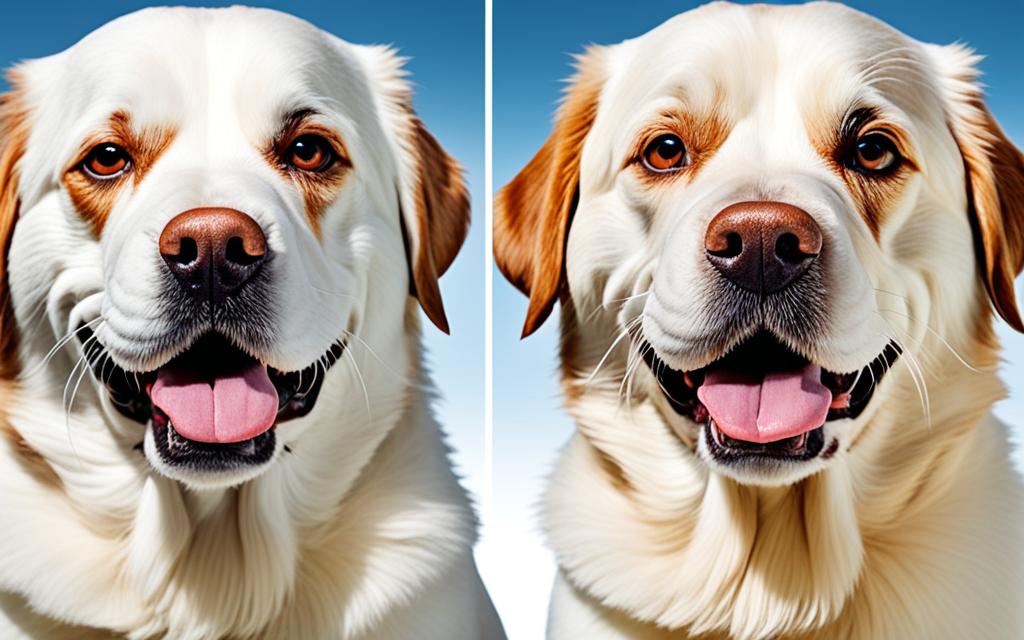
Conclusion
In this article, we looked at dog hot spots from every angle. We covered their signs, causes, and how to treat them. It’s key for dog owners to know about this issue to help their pets feel better fast.
Using natural remedies like herbs and essential oils is a good way to care for hot spots. These methods are gentle but work well. Keeping up with regular grooming and a healthy diet also helps prevent hot spots from happening again.
Working with your vet is crucial for the best care for your dog’s hot spots. This teamwork leads to faster healing and better health for your pet. With the right knowledge and actions, you can make your dog’s life much better.
